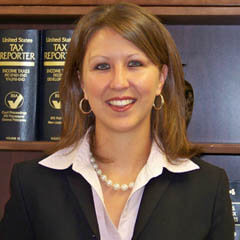By Myra Parker
Mary Byers is a speaker, facilitator, consultant and the author of “Race for Relevance: 5 Radical Changes for Associations.” At the Leadership Summit in May, there were lots of listening ears soaking in her insightful and practical advice for associations who want to ensure they remain relevant. I would like to share with you some of her nuggets of wisdom and questions to think on that not only affect how NCACPA operates, but also impact our personal lives and businesses.
6 Challenges Facing Associations:
#1 Time Pressures
- As participants in today’s workforce, we are more strapped for time than workers have ever been. More families have parents that both work. In 1950, less than 5 percent of families had dual incomes; today, more than 80 percent have dual incomes. In 2006, Americans were working 568 more hours annually than we were in 1979!
- Even American children are feeling the time pressure as well. When the makers of the Sorry! and Monopoly board games surveyed children to learn why they weren’t playing, they responded, “we are too busy.”
- Young association members weigh the trade-off between allocating time to their association and potential leadership positions with devoting time to family, friends and other obligations. They most likely contemplate this time allocation at greater lengths than their older professional counterparts may have.
- One item is for certain, people will make time for activities that are meaningful, relevant and fun.
- How can we take our association to our members and fit volunteer activities within their schedules? One solution may be “micro-volunteerism”—smaller, more short-term volunteer opportunities with lesser time commitments.
#2 Return on Investment
- Members of associations expect value out of the experiences they have with their association, whether it be through the association’s programming or volunteer opportunities.
- How can we help members work less stressfully, more profitably and more productively? To answer this question will be a definite means to adding value.
- How can we help members understand the value they are getting from their annual dues?
#3 Specialization and Consolidation (change the game)
- The professional needs of a CPA in the accounting department at a Fortune 500 company will be vastly different than a CPA in public practice as a sole practitioner.
- More and more businesses are consolidating. To illustrate, 1 in 4 homes in the US is built by a top 10 homebuilder company.
- How can we meet member needs as their needs and the organizational structures they belong to constantly change, keeping in mind that any changes must be incremental as most people are change adverse?
#4 Generational Values
- With four and very soon-to-be five generations all convening in the same workplace, we must move from using the word “or” to using “and.”
- Young professional associations are among the fast growing groups in the country. What can we take away from their model?
- How can we create opportunities for our members regardless of age?
#5 For-Profit Competition
- Associations are now competing with for-profit company competitors and often their own members in certain areas of their programming.
- What approach will associations take among its competitors with regard to program offerings such as CPE?
#6 Technology
- There are currently more mobile phones in the world than there are toothbrushes! (Wow—this one blew me away!)
- The number of people who will never own a desktop is steadily increasing each year.
- Who is adopting new technology first, the association or its members?
5 Radical Changes for Associations to Explore:
- Move to smaller, competency-based boards as groups of 6–7 tend to be the most effective at decision making. Mary’s rule of thumb: a committee should not be larger than one that can be served by two pizzas! Invite non-CPAs to serve on boards and committees and reach out to voices that are currently not represented to participate.
- Empower your CEO and focus on new staff skill sets.
- Rigorously define your member market.
- Rationalize programs and services. Be willing to let go. Eighty percent of member value comes from 20 percent of an association’s programs.
- Build a robust technology framework.
NCACPA asks your permission to experiment with our programs and question everything we do in order that we can be more relevant to YOU, our membership. In the words of Mary, “if you always do what you’ve always done, you’ll always get what you’ve always gotten.” She suggested to do at least one daring thing this year, and if someone does not complain, you have probably not mixed it up good enough!
We thank Mary for sharing her time with us and giving us fuel to spark future discussions.
 Myra practices public accounting with Oscar N. Harris & Associates, P.A. in Dunn, NC. She graduated from UNC-Chapel Hill earning a bachelor of science degree in business administration and a master of accounting and began her career with Ernst & Young in Raleigh, NC. Myra currently serves on the NCACPA’s Young CPA Cabinet and Sandhills Chapter Board.
Myra practices public accounting with Oscar N. Harris & Associates, P.A. in Dunn, NC. She graduated from UNC-Chapel Hill earning a bachelor of science degree in business administration and a master of accounting and began her career with Ernst & Young in Raleigh, NC. Myra currently serves on the NCACPA’s Young CPA Cabinet and Sandhills Chapter Board.
The post Mary Byers—A NCACPA Leadership Summit Favorite appeared first on North Carolina Association of Certified Public Accountants.



















